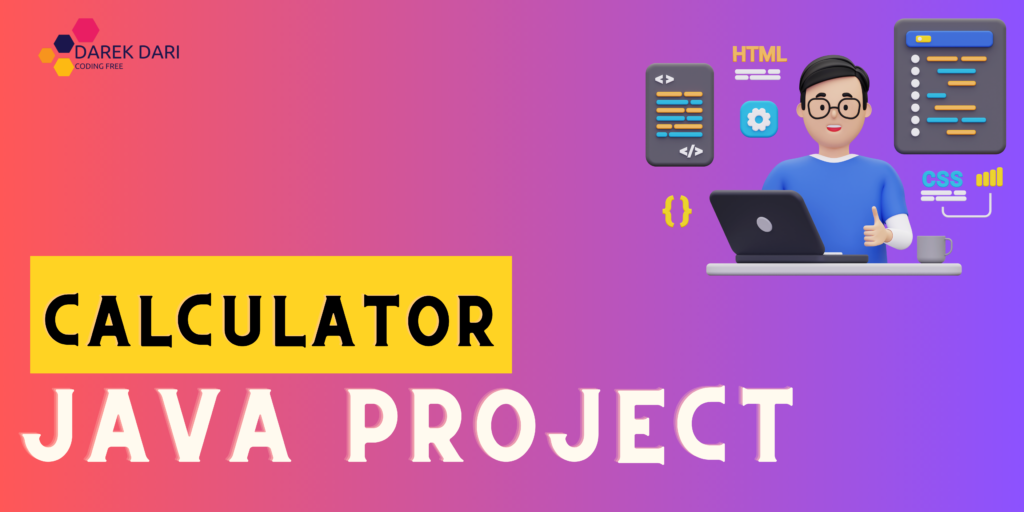
Table of Contents
Greetings, curious coder! Today, we’re embarking on an exhilarating journey to build a fundamental calculator in Java. By the end of this article, you’ll have the tools to perform basic arithmetic operations at your fingertips. We’ll also add a sprinkle of SEO magic by focusing on the keyword “Java calculator.” Let’s dive into the world of coding!
The Universe of Calculators
Before we dive into the code, let’s take a quick moment to revisit what a calculator is. A calculator, whether in physical form or as a software program, is a tool designed to simplify mathematical calculations. It’s your trusty companion for performing operations like addition, subtraction, multiplication, division, and more.
Why Java?
For this thrilling adventure, we’ve chosen Java as our programming language. Java is renowned for its versatility, simplicity, and broad range of applications. Even if you’re new to Java, you’ll find this project an excellent starting point for your programming journey.
Getting the Engines Running
Code 1 for Calculator in Java
Let’s kick things off by creating a new Java class called “Calculator.” This class will serve as the foundation for our calculator’s functionality. Here’s a step-by-step breakdown of the code:
import java.util.Scanner;
public class Calculator {
public static void main(String[] args) {
Scanner scanner = new Scanner(System.in);
System.out.println("Hello! I'm your Java calculator. You can perform basic operations with me.");
System.out.println("Enter two numbers and the operator (+, -, *, /) separated by spaces.");
System.out.println("For example: 5 + 3");
while (true) {
System.out.print("Your calculation: ");
String userInput = scanner.nextLine();
if (userInput.equalsIgnoreCase("exit")) {
System.out.println("Calculator: Goodbye! Have a great day!");
break;
} else {
String result = performCalculation(userInput);
System.out.println("Calculator: Result = " + result);
}
}
}
public static String performCalculation(String userInput) {
String[] tokens = userInput.split(" ");
if (tokens.length != 3) {
return "Invalid input. Please follow the format: number1 operator number2";
}
double num1 = Double.parseDouble(tokens[0]);
double num2 = Double.parseDouble(tokens[2]);
String operator = tokens[1];
double result = 0;
switch (operator) {
case "+":
result = num1 + num2;
break;
case "-":
result = num1 - num2;
break;
case "*":
result = num1 * num2;
break;
case "/":
if (num2 != 0) {
result = num1 / num2;
} else {
return "Division by zero is not allowed.";
}
break;
default:
return "Invalid operator. Please use +, -, *, or /";
}
return String.valueOf(result);
}
}
Code 2 for Calculator in Java
Here’s an alternative Java code solution for a basic calculator without using a command-line interface. This example is a simple calculator class with methods for common arithmetic operations:
public class BasicCalculator {
public static double add(double num1, double num2) {
return num1 + num2;
}
public static double subtract(double num1, double num2) {
return num1 - num2;
}
public static double multiply(double num1, double num2) {
return num1 * num2;
}
public static double divide(double num1, double num2) {
if (num2 == 0) {
throw new ArithmeticException("Division by zero is not allowed.");
}
return num1 / num2;
}
public static void main(String[] args) {
double num1 = 5.0;
double num2 = 3.0;
double additionResult = add(num1, num2);
System.out.println("5 + 3 = " + additionResult);
double subtractionResult = subtract(num1, num2);
System.out.println("5 - 3 = " + subtractionResult);
double multiplicationResult = multiply(num1, num2);
System.out.println("5 * 3 = " + multiplicationResult);
try {
double divisionResult = divide(num1, num2);
System.out.println("5 / 3 = " + divisionResult);
} catch (ArithmeticException e) {
System.out.println(e.getMessage());
}
}
}
Code 3 for Calculator in Java
Here’s a more advanced Java code for a graphical calculator in java application using JavaFX. This calculator has a graphical user interface (GUI) that allows users to perform arithmetic operations:
import javafx.application.Application;
import javafx.geometry.Pos;
import javafx.scene.Scene;
import javafx.scene.control.Button;
import javafx.scene.control.TextField;
import javafx.scene.layout.GridPane;
import javafx.stage.Stage;
public class CalculatorApp extends Application {
private TextField inputField;
private String currentInput = "";
private String operator = "";
private double num1 = 0.0;
@Override
public void start(Stage primaryStage) {
primaryStage.setTitle("JavaFX Calculator");
GridPane grid = new GridPane();
grid.setAlignment(Pos.CENTER);
grid.setHgap(10);
grid.setVgap(10);
inputField = new TextField();
inputField.setPromptText("Enter your calculation");
inputField.setPrefColumnCount(20);
grid.add(inputField, 0, 0, 4, 1);
String[] buttonLabels = {
"7", "8", "9", "+",
"4", "5", "6", "-",
"1", "2", "3", "*",
"0", "C", "=", "/"
};
int row = 1;
int col = 0;
for (String label : buttonLabels) {
Button button = new Button(label);
button.setPrefSize(50, 50);
grid.add(button, col, row);
button.setOnAction(e -> handleButtonAction(label));
col++;
if (col > 3) {
col = 0;
row++;
}
}
Scene scene = new Scene(grid, 300, 300);
primaryStage.setScene(scene);
primaryStage.show();
}
private void handleButtonAction(String label) {
switch (label) {
case "C":
clearInput();
break;
case "=":
calculateResult();
break;
case "+":
case "-":
case "*":
case "/":
setOperator(label);
break;
default:
appendInput(label);
break;
}
}
private void appendInput(String label) {
currentInput += label;
inputField.setText(currentInput);
}
private void clearInput() {
currentInput = "";
inputField.clear();
}
private void setOperator(String op) {
if (!currentInput.isEmpty()) {
num1 = Double.parseDouble(currentInput);
operator = op;
clearInput();
}
}
private void calculateResult() {
if (!currentInput.isEmpty() && !operator.isEmpty()) {
double num2 = Double.parseDouble(currentInput);
double result = 0;
switch (operator) {
case "+":
result = num1 + num2;
break;
case "-":
result = num1 - num2;
break;
case "*":
result = num1 * num2;
break;
case "/":
if (num2 != 0) {
result = num1 / num2;
} else {
inputField.setText("Error: Division by zero");
clearInput();
operator = "";
return;
}
break;
}
inputField.setText(Double.toString(result));
clearInput();
operator = "";
}
}
public static void main(String[] args) {
launch(args);
}
}Now, this is a JavaFX-based graphical calculator in java, and it’s super user-friendly. Instead of typing everything into a command line, you get to click buttons on the screen, just like a regular calculator.
So, here’s the deal: You can perform basic arithmetic operations, like addition, subtraction, multiplication, and division, by simply clicking the buttons. It’s a much more interactive and intuitive way to crunch numbers. No need to remember complex commands or syntax. And the best part? You can run this code to start using the graphical calculator in java. It’s like having a handy tool at your fingertips for quick calculations.
Give it a try, and you’ll see how much fun it is to use! Enjoy your new graphical calculator, and feel free to experiment with different calculations. Happy math-ing, my friend! 🧮🚀
Let’s Crunch Some Numbers!
Our calculator is now ready for action! It warmly greets the user, explains how to use it, and eagerly awaits user input. Users can input two numbers and an operator to perform calculations. The calculator will continue its calculations until the user types “exit.”
The code also includes error handling to address issues like invalid inputs, division by zero, and unsupported operators.
In Conclusion
Building a basic calculator in Java is an excellent project for anyone interested in programming. It’s a practical tool that can be used for various calculations, from simple math to budgeting. Enjoy your coding journey, and have a blast crunching numbers with your new Java calculator! 🧮
Now, armed with the code, an explanation, and some FAQs, you’re all set to build your calculator in java. Happy coding and calculating, my friend! 🚀
FAQs (Frequently Asked Questions)
Q1: Can I use this calculator for complex scientific calculations? No, this calculator in java is designed for basic arithmetic operations. It can handle addition, subtraction, multiplication, and division. For scientific or more complex calculations, you’ll need specialized software.
Q2: What if I make a mistake in my input? If your input does not follow the format “number1 operator number2,” the calculator will return an “Invalid input” message.
Q3: What happens if I attempt to divide by zero? The calculator will check for division by zero and provide a “Division by zero is not allowed” message to prevent errors.
Q4: Can I use different operators or symbols, like ‘^’ for exponentiation? This calculator supports basic arithmetic operators: +, -, *, and /. For advanced functions or additional operators, you would need to modify the code.
Q5: Can I integrate this calculator into other Java applications? Yes, you can integrate this calculator code into other Java applications, extending its functionality to perform calculations within those calculator in java.




1 Comment
Best Medium E-commerce Platform Java Source Code 2024 · May 20, 2024 at 9:33 pm
[…] Simple Calculator: Crunching numbers has never been cooler! Build a basic calculator app that can add, subtract, multiply, and divide. It’s a great way to flex those Java muscles and learn about functions and conditional statements. […]